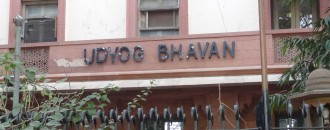
"Paradip Port will enable Odisha exporters get matching prices"
Odisha, one of the major seafood exporting states in the country, is yet to achieve its full potential as the exporters from the region continue to depend on ports in neighbouring states for export. Gora Chand Mohanty, Regional President, Seafood Exporters Association of India & CEO, Seagold Overseas in an exclusive interview with The Dollar Business, speaks on various issues related to seafood farming and the role of Paradip Port to promote trade in the region Interview by Sisir Pradhan | The Dollar Business  TDB: Odisha has some of the major shrimp and seafood exporters in the country. But the exporters from the region have been depending on Visakhapatnam Port for export as Paradip Port doesn’t provide reefer container shipment service. However, Paradip Port has commenced refrigerated container service in August last year. How do you think this will boost the sector? Gora Chand Mohanty (GCM): It is a significant step for the growth of seafood exports in the state. It is a dream come true. Due to low volume, seafood is not an attractive commercial proposition for Paradip Port. For them, it is something like more of social responsibility than income generation. We tried to convince the Port through Odisha Government, MPEDA, and Ministry of Commerce, and also raised this issue at all forums during the last so many years. Even the state Chief Minister Naveen Patnaik had taken it up with the Centre. But nothing happened. However, when the new chairman of Paradip Port took charge, we brought up this issue in an open house meeting in which Secretary, Ministry of Shipping, was also present. Things changed thereafter and the Port was very encouraging. As a result of these efforts, refrigerated cargo export from Paradip has become a reality today. Initially, four exporters shipped one container each to Vietnam ports i.e., Heipong and Ho Chi Minh Ports carrying fishery products. The first consignment of 100 tonnes of frozen seafood left for Vietnam in Hansa Castella vessel. TDB: What are the other countries that are identified for export? GCM: We have advised Seaways Logistics Ltd to find shipping lines interested for US Ports like New York and Los Angles, and Japan Ports i.e., Osaka and Tokyo, and Ports in EU countries. TDB: What were the difficulties you were facing while exporting from Kolkata and Visakhapatnam Ports?
TDB: Odisha has some of the major shrimp and seafood exporters in the country. But the exporters from the region have been depending on Visakhapatnam Port for export as Paradip Port doesn’t provide reefer container shipment service. However, Paradip Port has commenced refrigerated container service in August last year. How do you think this will boost the sector? Gora Chand Mohanty (GCM): It is a significant step for the growth of seafood exports in the state. It is a dream come true. Due to low volume, seafood is not an attractive commercial proposition for Paradip Port. For them, it is something like more of social responsibility than income generation. We tried to convince the Port through Odisha Government, MPEDA, and Ministry of Commerce, and also raised this issue at all forums during the last so many years. Even the state Chief Minister Naveen Patnaik had taken it up with the Centre. But nothing happened. However, when the new chairman of Paradip Port took charge, we brought up this issue in an open house meeting in which Secretary, Ministry of Shipping, was also present. Things changed thereafter and the Port was very encouraging. As a result of these efforts, refrigerated cargo export from Paradip has become a reality today. Initially, four exporters shipped one container each to Vietnam ports i.e., Heipong and Ho Chi Minh Ports carrying fishery products. The first consignment of 100 tonnes of frozen seafood left for Vietnam in Hansa Castella vessel. TDB: What are the other countries that are identified for export? GCM: We have advised Seaways Logistics Ltd to find shipping lines interested for US Ports like New York and Los Angles, and Japan Ports i.e., Osaka and Tokyo, and Ports in EU countries. TDB: What were the difficulties you were facing while exporting from Kolkata and Visakhapatnam Ports?
 Gora Chand Mohanty, CEO, Seagold Overseas & Regional President, Seafood Exporters Association of India
Gora Chand Mohanty, CEO, Seagold Overseas & Regional President, Seafood Exporters Association of IndiaGCM: We are dealing with a perishable commodity like fish where cold chain is a must. The longer the distance, the more the cost and the stress. There is always a delay factor, and at times, our boxes reach in the morning and are kept waiting to be loaded in the night. We have to totally depend on agents. There is a problem in such a situation as we have to stock our products in public cold storage facilities in Vizag and Kolkata. There were many issues like Sales Tax, and Interstate border hassles, transport harassment, among others which has created lot of problems for our exporters. The overseas buyers also prefer the exporters whose ports are nearer to factory. Hopefully all these turbulent days will get over soon. TDB: As seafood export from Odisha has risen to Rs.1,817 crore in FY2013-14 compared to Rs.886.15 crore in the year ago period, do you think the quantum of exports will increase due to the commencement of refrigerated container service from Paradip Port? GCM: Yes. Fish items other than shrimps like Pomfret, Indian Meckrels, Ribbon Fish, Cuttlefish, Squids etc., the exports of which were not workable earlier due high transport costs, can now be exported. Odisha exporters would get prices that match their counterparts in Andhra Pradesh and West Bengal. The competitiveness certainly adds to volume and value of exports from Odisha. TDB: From Odisha, an estimated 30,980 tonnes of shrimps and fishes worth Rs.1,817 crore (FOB) were shipped in FY2013-14, what is your expectation for this fiscal? GCM: We’ll cross Rs.2,000 crore for sure this year. TDB: With the launch of refrigerated container service, what is the savings for shrimp exporters from Odisha in terms of overhead and time? GCM: If regular refer container shipments are made available at Paradip, the minimum savings in shrimp export for a 40ft container would be to the tune of Rs.50,000 when compared to it being shipped from Visakhapatnam. Paradip is hardly 120 km from most of the factories in the state. The cargo can reach in 3 hours time from factories. Stuffing can be done inside plants which will be of further advantage. Now, the overseas buyers’ perception for Odisha exporters is that Port is in the neighbouring state and despite our expenses, the prices most of the time offered are lesser than that of our counterparts in Andhra Pradesh and West Bengal. This is so because of the buyers’ apprehension on quality as it involves long distance transport to the Port. When they come to know that we are shipping from Paradip Port which is nearby we can get matching prices. Secondly, savings on transportation costs will add up to competitiveness. TDB: India’s seafood export crossed one million tonne mark for the first time, earning $4.5 billion in 2013 and in rupee terms, the estimates indicated earnings of Rs.20,000 crore. Having achieved this, again, the export market seems to be downwards, why? GCM: Prices are down by 30%, and strengthening of Rupee will make us loose another 10%. The exports was flat at $3.5 billion for two consecutive years when in FY2012-13, India shipped 928,215 tonnes of shrimps valued at Rs.18,856 crore. After that, India witnessed the record performance in the last fiscal. RBI and Ministry of Commerce have to come forward to stabilise the currency fluctuations. Moreover, Odisha's potential is yet to be explored. The farmers of the state are facing shortage of seed and feed for Black Tiger culture, as they are dependent on Andhra Pradesh, where Vannamei culture has relegated Black Tiger to oblivion. Due to lack of infrastructure, Odisha’s small farmers (more than 90%) cannot go for Vannamei culture. Our request to MPEDA for operating hatchery in Gopalpur on sea (earlier OSSPARC Hatchery) is still under consideration. State owned Chandravaga Hatchery, which was leased to private contractor for Vannamei seed has failed to deliver. The input cost for Odisha farmers are almost 20% higher than that of Andhra Pradesh for which price fall will hurt farmers in Odisha and exporters the most. TDB: MPEDA has envisaged an ambitious target of $ 4.3 billion for FY2014-15. How realistic is this target in the prevailing situation? GCM: Under the present situation we are skeptical of even meeting last year’s export figures. Secondly, MPEDA has no plan for increasing production at primary level in the state. There is hardly any coordination. Target is probably set on trend basis without any back up of production data. TDB: Exports to China and Middle East countries have shown increase. Will you be focusing more on the MENA region for boosting exports? GCM: We are focussing more on exports to China. However, Chinese Government is having a custom duty of 16% which is quite restrictive for our products. Exports to Vietnam is also increasing. Mexico, Canada and CIS countries could be new destinations.
This article was published on March 03, 2015.






 to success.
to success.